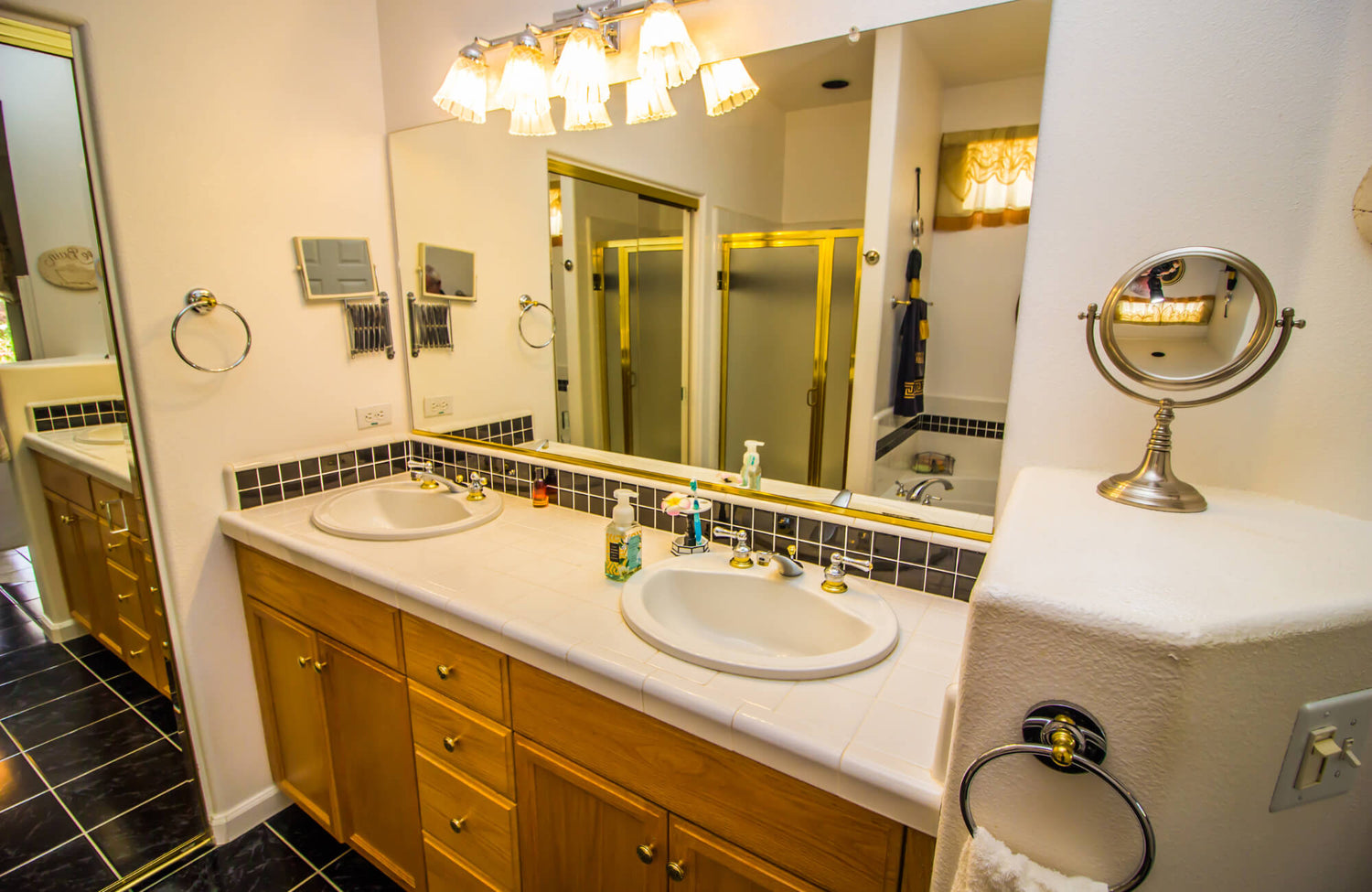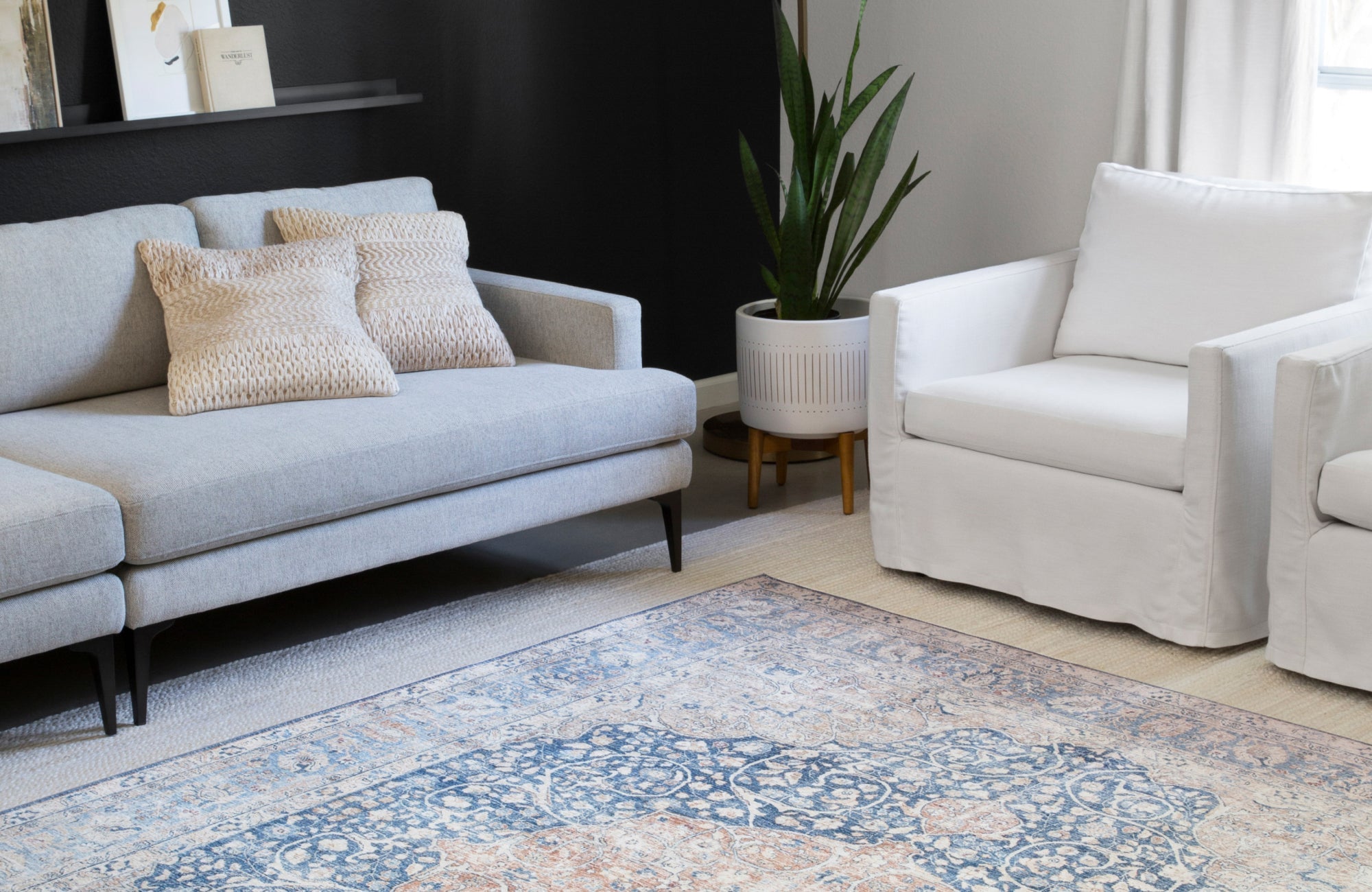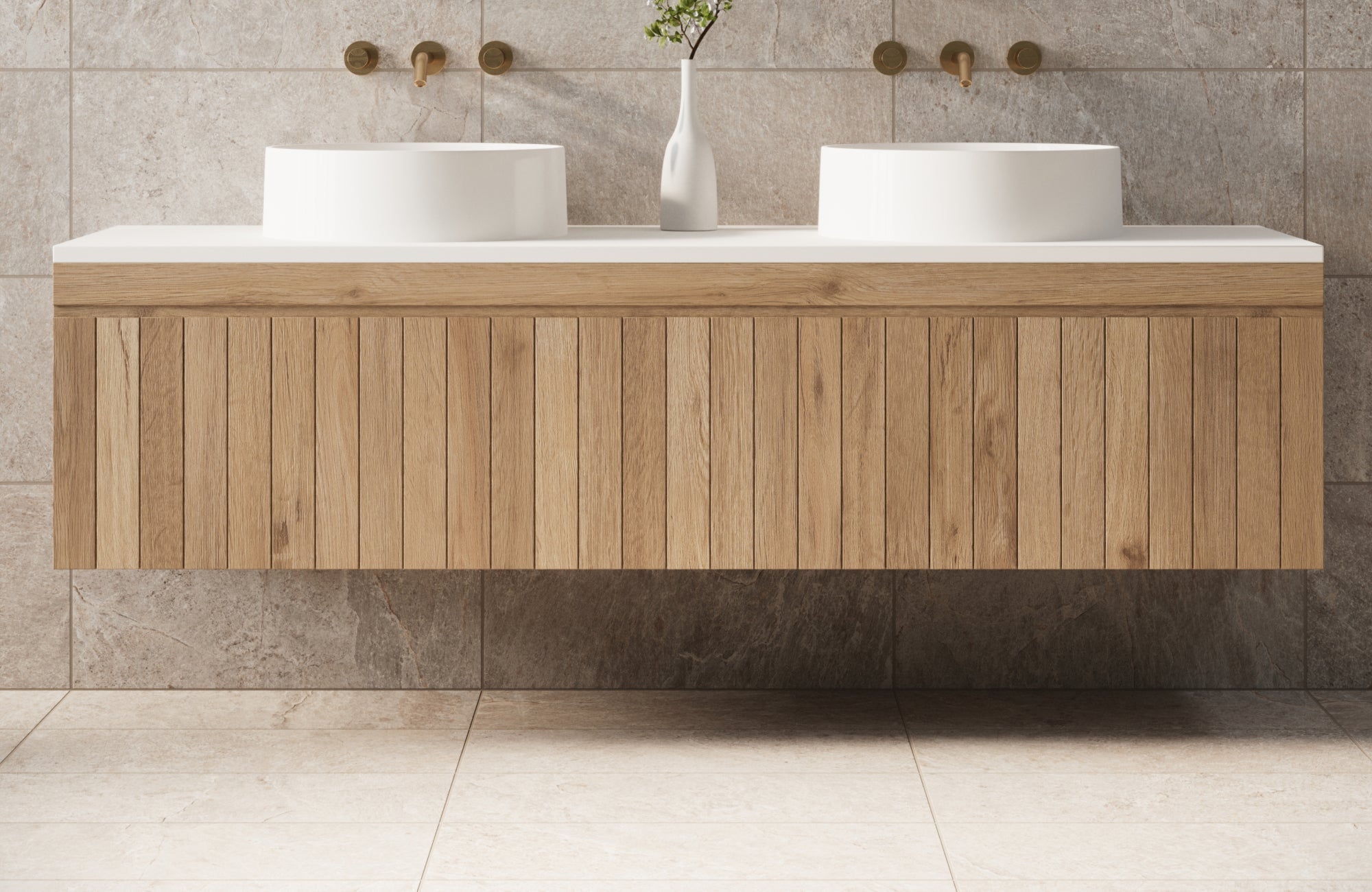Overflowing countertops and congested morning routines are common in shared bathrooms, but they don’t have to be. Fortunately, a double vanity offers more than just an extra sink; it delivers targeted solutions for space management, from expanded surface area to built-in storage optimized for daily essentials. With customizable features and durable materials, this fixture supports both efficiency and long-term durability.
Beyond practicality, the visual impact of a double vanity is equally significant. A well-designed model anchors the room, introducing symmetry and scale that elevate the entire space. Throughout this article, we’ll explore how a double vanity from Edward Martin can help transform your bathroom into a streamlined, clutter-free environment, one that performs as beautifully as it looks.

Understanding the Double Vanity Advantage for Space Management
When it comes to managing bathroom space more effectively, especially in shared or high-footfall settings, a double vanity can make a measurable difference. From freeing up counter space to improving flow and organization, its benefits go well beyond just having an extra sink.
Enhanced Countertop Real Estate
As an initial advantage, a double vanity spanning 60 to 72 inches provides significantly more countertop surface for daily-use items, grooming tools, and décor. This expanded area allows for clearly defined zones for each user, reducing clutter and minimizing overlap. In addition, durable, low-maintenance materials such as quartz, granite, or solid-surface composites improve both the vanity’s appearance and its long-term performance. Edge profiles like ogee or beveled cuts offer further customization, adding subtle elegance. Whether during a hectic morning or a relaxed evening routine, the added surface area promotes both efficiency and personal space, something a single vanity often lacks.
Dual Sink Functionality
Equally important is the inclusion of dual sinks, which allows multiple users to access the vanity simultaneously without disruption. This feature is particularly beneficial in Jack-and-Jill bathrooms, master en suites, and busy guest baths. By assigning each person their own basin and faucet, daily routines become smoother and more efficient. Plumbing layout is a key consideration: dual sinks typically require either split drain systems or separate P-traps, along with proper venting for optimal performance. Moreover, faucet styles, whether widespread or wall-mounted, can be tailored to suit either undermount or vessel sinks, further enhancing usability and design cohesion. As a result, this configuration not only meets functional needs but also aligns with universal design principles and increases long-term value.
Increased Storage Capacity
Finally, one of the most impactful advantages of a double vanity is its enhanced storage capacity. The expanded base allows for dual under-sink cabinets and a central bank of drawers, often equipped with soft-close glides, dovetail joints, and full-extension slides for added convenience. To further maximize organization, some models include integrated dividers, pull-out trays, and concealed power outlets to accommodate modern grooming tools. This thoughtful blend of vertical and horizontal storage reduces the need for additional furniture, such as over-the-toilet cabinets, which can otherwise make a bathroom feel crowded. As a result, the space remains both clutter-free and visually streamlined.
A perfect example of this smart balance between utility and style is Edward Martin’s Maxine 72" Double Vanity in Washed Natural Veneer with a Carrara Marble Top, as shown in the photo above. With its symmetrical cabinets, generous drawer storage, and open lower shelf, it delivers both high-capacity storage and a refined aesthetic that suits modern and transitional interiors alike.

Strategic Storage Solutions within a Double Vanity
To get the most out of your double vanity, smart storage solutions are just as important as the vanity itself. Thoughtful design details, both inside and around the unit, can dramatically improve how your space functions day to day.
Maximizing Drawer Dividers and Organizers
As a first consideration, double vanity drawers offer the ideal opportunity for organized, compartmentalized storage. Adjustable dividers and modular inserts, made from wood, acrylic, or metal, help establish specific zones for grooming tools, cosmetics, and other everyday essentials. Shallow drawers benefit from tiered or layered inserts for easy visibility, while deeper drawers can accommodate vertical organizers or pull-out trays designed for bulkier items.
Moreover, many premium vanities now include thoughtful features such as soft-close hardware, full-extension glides, and built-in organizers. These enhancements not only improve accessibility but also reduce clutter and help preserve the condition of your stored items.
As illustrated in the image above, Edward Martin’s Holly 72" Double Vanity in Sunwashed Oak with a 3 cm White Zeus Quartz Top is a prime example of this functionality. Its spacious central drawers and side compartments work seamlessly with custom inserts, making it easy to keep daily-use items neat, visible, and within reach.
Optimizing Cabinet Space
In addition to drawers, the cabinets beneath each sink offer valuable vertical storage, but they require smart configuration to offset the intrusion of plumbing. U-shaped or offset shelving takes advantage of awkward voids, while adjustable shelves and rollout trays improve access to less frequently used items.
Furthermore, modern vanities with concealed power outlets or motion-activated interior lighting can make these spaces even more functional. Selecting moisture-resistant materials like marine-grade plywood or PVC laminates ensures durability in humid environments. Altogether, these design choices transform underutilized cabinet space into a highly efficient and user-friendly storage zone.
Integrated Shelving and Open Storage Options
Finally, integrated open shelving introduces both functional value and visual openness, especially in spa-inspired or contemporary bathrooms. These shelves, whether flanking the drawers, positioned at the vanity base, or mounted externally, are perfect for storing rolled towels, stylish containers, or decorative accents.
Although open shelving maintains a lighter aesthetic compared to enclosed cabinetry, it benefits greatly from thoughtful curation. Coordinated bins, jars, or baskets not only increase usability but also support a cohesive, clutter-free design, particularly when their materials or finishes complement the vanity itself.

Beyond the Vanity Incorporating Surrounding Elements
Even with a well-designed double vanity, the surrounding space is essential to maintaining both organization and visual balance in your bathroom. By making smart use of adjacent walls, overlooked corners, and linen storage, you can extend both the function and style of your vanity area.
Wall-Mounted Storage and Mirrors
As a starting point, wall-mounted elements are excellent for maximizing vertical space while preserving a clean footprint. Modern medicine cabinets, often recessed behind mirrors, now come equipped with features like LED lighting, anti-fog technology, and built-in outlets, offering discreet yet highly functional storage. In tandem, frameless mirror cabinets and pivoting panels support minimalist aesthetics while still providing utility.
Additionally, open shelving placed above or beside the vanity creates accessible zones for frequently used items such as skincare products or apothecary jars, adding texture and visual interest. Floating cabinets and wall-mounted cubbies, particularly those crafted from moisture-resistant MDF or thermally fused laminate, can be customized to match the vanity finish, reinforcing design continuity without overwhelming the space.
A great example of this concept in action is Edward Martin’s Colton 72" Double Vanity in Coastal Driftwood with a 3 cm White Zeus Quartz Top. As shown in the picture above, its clean, neutral design provides a calm backdrop for wall-mounted storage elements, allowing them to serve their purpose without visual interference.
Utilizing Nooks and Crannies
Beyond the main vanity wall, many bathrooms feature architectural recesses, corners, or narrow voids that are often underutilized. These areas can be transformed into high-functioning storage solutions. For instance, narrow gaps beside the vanity are ideal for pull-out storage towers, while wall cavities can be fitted with recessed shelves finished in tile, wood, or mirrored panels to match your decor.
Moreover, window ledges and low dormers, especially in attic or sloped-ceiling bathrooms, can be adapted into towel storage or display niches with the right trim and waterproofing. To further improve functionality, integrated LED strip lights or motion-activated pucks can elevate both the look and utility of these often-overlooked spaces.
Smart Towel and Linen Management
Equally important is managing towel and linen storage, particularly in busy or shared bathrooms. Rather than depending on hallway linen closets, integrated storage within the bathroom itself improves efficiency and accessibility. Tall linen towers, whether freestanding or built into the vanity, can feature adjustable shelves, pull-out hampers, or ventilated compartments for damp items.
For smaller bathrooms, wall-mounted towel racks, heated rails, or hooks behind mirrors provide practical alternatives that don’t require additional square footage. Meanwhile, open cubbies or baskets for rolled towels maintain a tidy and curated appearance. Importantly, choosing moisture-resistant materials such as powder-coated metals or sealed wood also ensures that these storage elements stand up to humidity over time.
Taken together, these strategies show that by extending thoughtful design beyond the vanity itself, you can create a more cohesive, functional, and clutter-free bathroom that supports both daily use and long-term efficiency.

Design Considerations for a Clutter-Free Double Vanity
A clutter-free double vanity doesn’t happen by accident; it’s the result of smart, well-planned design choices that support how the space is used every day. From the materials you select to the way you light and power the area, every detail plays a part in keeping things both functional and visually clean.
Material and Finish Choices
One of the first factors to consider is durability and ease of maintenance when selecting vanity materials. Hardwood plywood and MDF with water-resistant laminates or thermofoil coatings are excellent choices for high-humidity environments, while marine-grade plywood is ideal in bathrooms with limited ventilation, thanks to its resistance to warping.
Equally important is the choice of finish. Matte and wood-grain textures are especially effective at concealing fingerprints, dust, and wear, preserving a polished appearance with minimal upkeep. For countertops, non-porous quartz remains a standout for its stain resistance, durability, and suitability for high-use areas. In addition, design elements like soft-close drawers, concealed hinges, and minimalist hardware enhance functionality while maintaining a clutter-free aesthetic.
A perfect example of this refined approach is Edward Martin’s Sasha 60" Double Vanity in Mid Century Walnut with a 3 cm White Zeus Quartz Top, as displayed in the picture above. It blends rich wood texture with the durability of quartz and streamlined hardware, making it an ideal choice for style-conscious bathrooms.
Lighting and Its Impact on Organization
Moving beyond materials, lighting is equally crucial in supporting both organization and usability. Thoughtful, layered lighting, combining ambient, task, and accent sources, ensures every zone of the vanity is properly illuminated. Wall-mounted LED sconces or vertical light strips positioned at eye level help eliminate shadows, making daily grooming easier and more precise.
Furthermore, under-cabinet or in-drawer LED lighting offers subtle illumination that keeps the space functional even during early mornings or late nights. To enhance clarity, opt for natural white light (around 4000K) and a high CRI (Color Rendering Index) of 90 or above, particularly important for accurate makeup application or grooming.
Integrating Power Outlets
As a final consideration, power integration is often overlooked but essential for a seamless bathroom experience. In-drawer outlets, commonly referred to as “hair appliance drawers” or “charging drawers”, allow users to plug in devices like razors, hairdryers, and electric toothbrushes while keeping cords hidden and countertops clear.
In addition, placing secondary outlets under cabinets or along backsplashes provides convenient access without disrupting the overall aesthetic. To ensure safety and compliance, be sure to use tamper-resistant, moisture-rated GFCI models in all wet-zone installations.
To further simplify the planning process, Edward Martin’s design consultation service offers expert assistance in selecting finishes, configuring power placement, and refining your layout from start to finish. For additional support, whether you're selecting products or coordinating complementary fixtures, contact the Edward Martin team for personalized guidance tailored to your space.

Establishing Clutter-Prevention Habits for Long-Term Success
Even the most functional double vanity can lose its edge without a few good habits to back it up. To keep clutter from creeping back in, it helps to build simple, consistent routines that support the space you’ve thoughtfully designed.
The "One In, One Out" Rule
One practical starting point is the “One In, One Out” rule, a cornerstone of clutter control. This approach helps maintain balance by ensuring that for every new item added to the vanity, one existing item is removed. It’s especially effective in shared vanities where space fills up quickly and duplicates often accumulate.
Additionally, categorizing belongings, such as “Daily Use,” “Occasional Use,” and “Backstock”, streamlines access and reduces decision fatigue. The result is a more intentional, mindful use of space that supports both functional organization and visual calm.
Reinforcing this method, Edward Martin’s Delilah 72" Double Vanity in Seaside Oak with a 3 cm White Zeus Quartz Top, as featured in the photo above, includes well-defined drawers and open shelving that make it easy to group items, evaluate usage, and manage inventory at a glance.
Daily Tidy-Up Routines
In addition to the “One In, One Out” rule, a quick daily reset can go a long way in preserving a clean and efficient vanity area. Simple actions, like returning items to their designated spots, wiping down surfaces, and scanning for clutter, require only a few minutes but make a lasting impact.
To make this routine second nature, the vanity should be equipped with intuitive storage: shallow trays for everyday items, vertical dividers for tools, and drawer inserts for smaller accessories. In shared bathrooms, assigning each user their own zone helps reduce overlap and promotes accountability. For long-term performance, always refer to the manufacturer’s care guidelines to protect finishes and ensure the longevity of hardware.
Seasonal Decluttering Strategies
Of course, even the best daily habits need occasional reinforcement. That’s where seasonal decluttering comes in, a quarterly or semiannual deep-cleaning routine that helps recalibrate your space. Begin by emptying all drawers and cabinets, cleaning interior surfaces, and discarding any expired, duplicate, or unused items.
Next, reorganize with purpose, rotating lesser-used products to secondary storage and updating dividers or lighting if needed. This process not only refreshes your layout but also ensures your vanity adapts to changing needs throughout the year. By keeping systems flexible and intentional, you’ll preserve the functionality and appeal of your bathroom over time.
Redefining Bathroom Efficiency with the Right Vanity Solution
A double vanity isn’t just a visual centerpiece; it’s a purposeful solution to the everyday clutter that can overwhelm shared bathrooms. By combining expanded counter space, dual-sink efficiency, and integrated storage with thoughtful features like in-drawer outlets and layered lighting, it transforms a busy environment into a high-functioning space.
More importantly, a true organization goes beyond the fixture itself. When durable materials and smart layouts are paired with sustainable upkeep, a double vanity becomes a lasting investment in both style and structure. For expert guidance on crafting a solution tailored to your needs, turn to Edward Martin’s curated designs and personalized recommendations—a trusted resource for creating bathroom spaces that perform beautifully every day.







